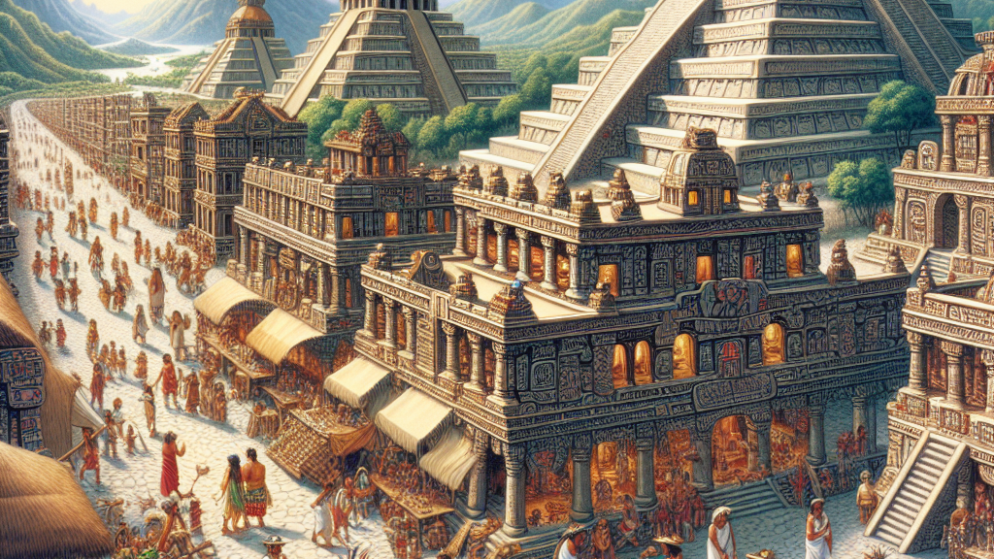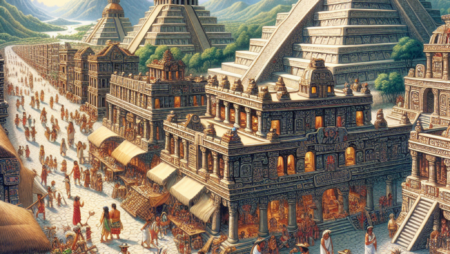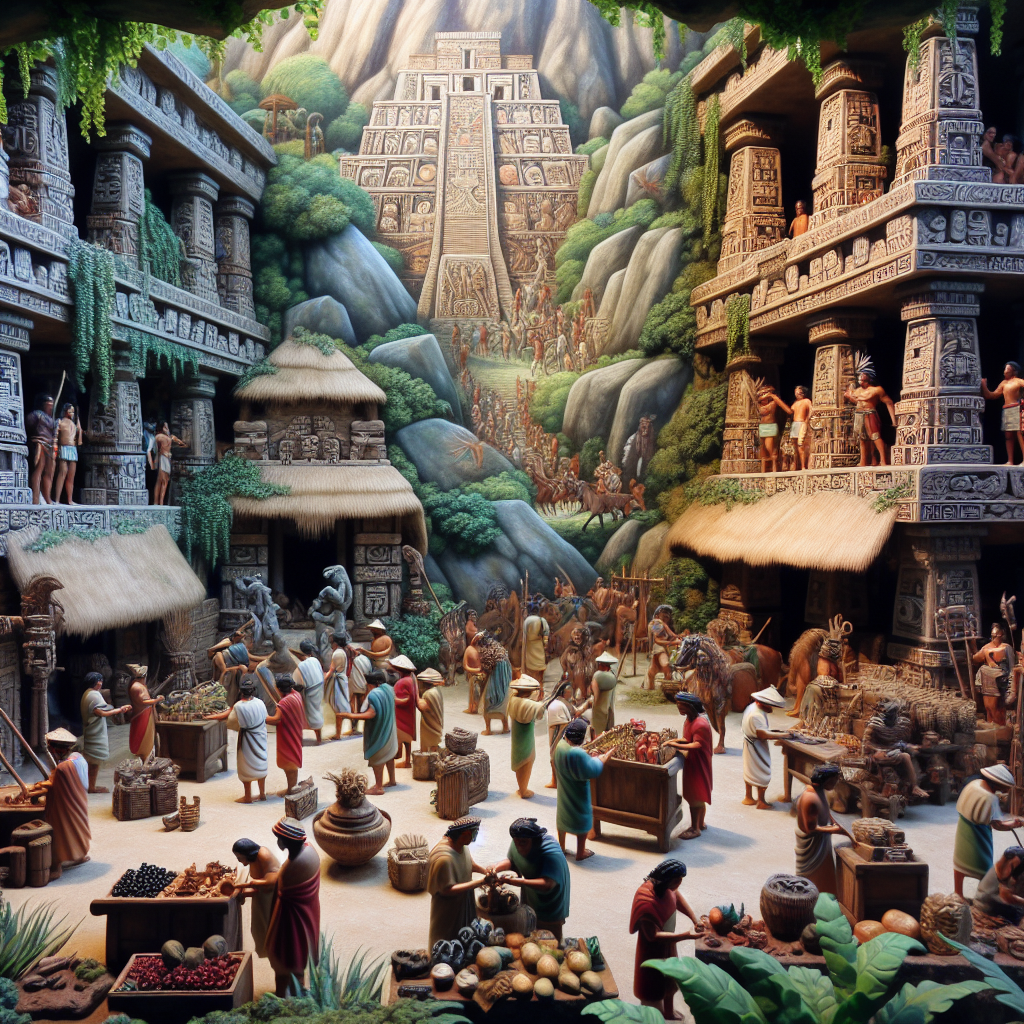
 Discover the Charms of Fortunes of the Aztecs
Discover the Charms of Fortunes of the Aztecs Unveiling the Mysteries: The Riches of the Aztec Civilization
The allure of the Aztec civilization, a pre-Columbian society that thrived in the heart of Mexico from the 14th to the 16th centuries, continues to captivate historians, archaeologists, and enthusiasts alike. The Aztecs, known for their intricate social, political, and religious structures, were also renowned for their immense wealth and prosperity. This article aims to unveil the mysteries surrounding the fortunes of the Aztecs, offering a glimpse into the opulence and grandeur of this ancient civilization.
The Aztecs were a society deeply rooted in agriculture, with maize, beans, and squash forming the cornerstone of their diet. However, their wealth was not solely derived from their agricultural prowess. The Aztecs were skilled traders, with a complex network of commerce that extended across Mesoamerica. They traded a variety of goods, including precious stones, feathers, cotton, cacao beans, and even live animals. This trade network not only brought material wealth but also facilitated cultural exchange and the spread of Aztec influence.
The Aztecs’ wealth was also reflected in their architecture and art. The capital city of Tenochtitlan, now modern-day Mexico City, was a testament to their architectural ingenuity and aesthetic sensibilities. The city was adorned with grand temples, palaces, and public buildings, many of which were decorated with gold, silver, and precious stones. The Templo Mayor, the main temple of Tenochtitlan, was a magnificent structure that stood at the heart of the city, symbolizing the Aztecs’ religious devotion and their wealth.
In addition to their architectural marvels, the Aztecs were also known for their exquisite craftsmanship. They produced a wide range of artifacts, including jewelry, pottery, and sculptures, often using gold, silver, and precious stones. These artifacts were not only aesthetically pleasing but also held significant cultural and religious significance. The Aztecs believed that these objects possessed spiritual powers and used them in religious rituals and ceremonies.
The Aztecs’ wealth, however, was not without its challenges. Their prosperity attracted the attention of the Spanish conquistadors, who were drawn to the New World by tales of cities filled with gold. The arrival of the Spanish in the early 16th century marked the beginning of the end for the Aztec civilization. Despite their initial resistance, the Aztecs were eventually overpowered by the Spanish, who plundered their wealth and destroyed their cities.
The fortunes of the Aztecs, while no longer physically present, continue to live on in the form of their cultural legacy. The artifacts that have been unearthed, the ruins of their cities, and the stories that have been passed down through generations serve as a testament to their wealth and prosperity. These remnants of the Aztec civilization offer a fascinating glimpse into a society that was not only rich in material wealth but also in culture and tradition.
In conclusion, the fortunes of the Aztecs were a reflection of their advanced society, their cultural sophistication, and their economic prowess. Their wealth was not merely a product of their agricultural and trading activities, but also a manifestation of their artistic creativity, their religious beliefs, and their architectural ingenuity. As we continue to delve into the mysteries of the Aztec civilization, we are reminded of the richness and diversity of human history, and the enduring allure of ancient civilizations.
Exploring the Aztec Empire: A Journey into their Fortunes and Charms

The Aztec Empire, a civilization that flourished in the heart of Mexico from the 14th to the 16th century, is renowned for its rich history, vibrant culture, and profound influence on modern Mexico. The Aztecs were not only skilled warriors and builders, but they were also deeply spiritual people who believed in the power of charms and fortunes. This article aims to delve into the fascinating world of the Aztecs, exploring their fortunes and charms, and the role these played in their society.
The Aztecs were a deeply religious society, with a pantheon of gods and goddesses that they worshipped and revered. They believed that their fortunes were directly linked to the will of these deities. Consequently, they developed an intricate system of rituals and ceremonies to appease these gods and secure their favor. These rituals often involved the use of charms and amulets, which were believed to carry the power of the gods and bring good fortune to their bearers.
One of the most significant aspects of Aztec culture was their belief in the power of charms. These charms, often crafted from precious metals, gemstones, and other materials, were thought to possess magical properties that could protect the wearer from harm, bring good luck, or even influence the outcome of events. They were often intricately designed, reflecting the Aztecs’ remarkable craftsmanship and artistic sensibility.
The Aztecs also had a complex system of divination, which they used to predict the future and make important decisions. This system, known as the tonalamatl, was based on a 260-day sacred calendar. Each day was associated with a specific god or goddess, and the fortunes of individuals and the community were believed to be influenced by the deity of the day. The tonalamatl was used for everything from determining the best days for planting and harvesting crops, to deciding when to go to war.
The Aztecs’ belief in the power of charms and fortunes was not limited to their religious practices. It also permeated their daily lives. For instance, newborns were often given a charm to protect them from evil spirits. Similarly, warriors would carry charms into battle to ensure victory. Even the Aztec emperors were known to wear charms and amulets, believing that they would bring them good fortune and protect them from harm.
Despite the fall of the Aztec Empire in the 16th century, the influence of their beliefs in charms and fortunes can still be seen in modern Mexico. Many traditional Mexican crafts, such as the making of amulets and talismans, have their roots in Aztec culture. Similarly, the belief in the power of charms to bring good luck and ward off evil is still prevalent in many parts of Mexico.
In conclusion, the Aztecs’ belief in the power of charms and fortunes was a central aspect of their culture and society. It influenced their religious practices, their daily lives, and even their decision-making processes. Today, the legacy of the Aztecs continues to live on in the traditions and beliefs of modern Mexico, a testament to the enduring influence of this remarkable civilization.
The Aztecs: A Deep Dive into their Fascinating Fortunes and Charms
The Aztecs, a civilization that thrived in the heart of Mexico from the 14th to the 16th century, have left an indelible mark on the annals of history. Their fascinating fortunes and charms, which are deeply rooted in their rich culture and complex belief systems, continue to captivate the modern world.
The Aztecs were renowned for their intricate craftsmanship, which was often imbued with profound spiritual and symbolic significance. One of the most notable aspects of their craftsmanship was the creation of charms and amulets. These objects were not merely decorative; they were believed to possess magical properties that could protect the wearer, bring good fortune, or ward off evil spirits.
The materials used in the creation of these charms were as diverse as the Aztec pantheon itself. Precious metals like gold and silver were commonly used, as were a variety of gemstones, each with its own unique spiritual significance. Turquoise, for instance, was associated with Huitzilopochtli, the Aztec god of the sun and war, and was believed to confer strength and courage. Similarly, obsidian, a dark volcanic glass, was linked to Tezcatlipoca, the god of the night sky, and was thought to offer protection against negative forces.
The Aztecs also had a deep fascination with the natural world, which was reflected in their charms. Many of their amulets were shaped like animals, plants, or natural phenomena, each symbolizing a different aspect of life or the divine. The eagle, for example, was a symbol of the sun and the heavens, while the jaguar represented the earth and the underworld. These charms were often worn as pendants or incorporated into larger pieces of jewelry, serving as constant reminders of the wearer’s connection to the natural world and the divine.
The fortunes of the Aztecs were closely tied to their belief in the cyclical nature of time and the cosmos. They believed that the universe was governed by a series of cycles, each associated with a different god or goddess. These cycles were thought to influence everything from the weather to the success of crops, and understanding them was considered key to predicting and influencing one’s fortune.
The Aztecs developed a complex calendar system to track these cycles, which was used not only for practical purposes like agriculture but also for divination. Priests would interpret the calendar to make predictions about the future, and individuals would consult them to learn about their personal fortunes. This belief in the cyclical nature of time and the influence of the gods was so deeply ingrained in Aztec society that it influenced everything from their daily routines to their grandest ceremonies.
In conclusion, the fortunes and charms of the Aztecs offer a fascinating glimpse into a civilization that was deeply connected to the natural world and the divine. Their intricate amulets and complex belief systems continue to captivate the modern world, serving as a testament to their rich culture and profound spiritual understanding. Whether it’s the symbolic significance of their charms or the cyclical nature of their fortunes, the Aztecs’ legacy continues to resonate, offering a wealth of insights into a civilization that was as complex as it was captivating.




